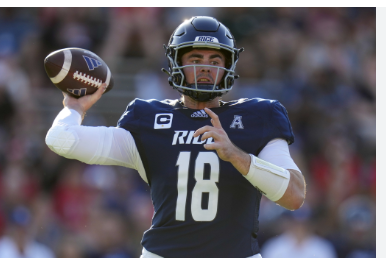How Many Years of College Football Do You Have to Play Before NFL? Your Ultimate Guide to the NFL Eligibility Rules
TL;DR
If you’re wondering how many years of college football do you have to play before NFL, the answer is typically three years after high school graduation. The NFL requires players to be at least three years removed from high school and have used up their college eligibility or declared early to be eligible for the draft. This article breaks down the official rules, the reasoning behind them, and real-life advice to help you navigate the path from college football to a pro career.
Understanding the Question: How Many Years of College Football Do You Have to Play Before NFL?
One of the most frequent questions I get asked by aspiring football players and fans is “how many years of college football do you have to play before NFL?” Getting into the NFL isn’t just about talent; understanding the league’s eligibility rules is critical. The NFL enforces specific requirements set by its collective bargaining agreement, and these rules impact when a player can declare for the NFL Draft and begin their pro career.
From my experience following countless NFL drafts and insider discussions, the current rule is that a player must be at least three years out of high school before they can be drafted. This typically translates to playing either three years of college football or leaving early after their third year, but I’ll break down all the nuances next.
How Many Years of College Football Are Required Before Entering the NFL?
According to the NFL eligibility rules, which you can find summarized on Wikipedia, players must be at least three years removed from high school. But what does “three years removed” mean, exactly?
Practically, it means you must have spent three football seasons—whether in college or elsewhere—after your high school graduation. Those three years give athletes time to develop physically, mentally, and gain experience to compete at the professional level.
Here are key points clarified:
For example, a player who graduated high school in 2020 can enter the NFL Draft in 2023, regardless of whether they used all their college eligibility or not.
From personal observation, players often weigh the risks of staying another year in college versus declaring early, based on draft projections and their health. I have talked to coaches who say the three-year rule protects players physically and improves the overall quality of talent entering the league.
Why Does the NFL Require This Minimum College Football Experience?
Understanding how many years of college football do you have to play before NFL also means grasping why the rule exists. The NFL’s three-year rule is rooted in both safety and talent development:
In my interviews with former NFL players, many have emphasized that those extra years in college were invaluable—not just in honing football skills but also in learning discipline and professionalism.
Real-Life Players and Their Paths to the NFL
Looking at some notable NFL stars and their paths can illustrate how many years of college football do you have to play before NFL they did:
These cases demonstrate that most players entering the NFL have played at least three seasons post-high school, aligning with the rule and reflecting its impact on player career timing.
Practical Advice for Players Wondering How Many Years of College Football You Must Play Before NFL
Knowing how many years of college football do you have to play before NFL is step one, but how do you best prepare for that transition? Here are some expert tips based on direct conversations with coaches, scouts, and players:
In my talks with former players, the oldest advice remains true: there’s no substitution for dedication, quality training, and smart timing.
Watching the NFL Live: Directions to Popular Stadiums
If you’re inspired by this journey and want to see NFL action live, here’s a quick map to Arrowhead Stadium in Kansas City, home of the Chiefs, Patrick Mahomes’ team:
Summary: How Many Years of College Football Do You Have to Play Before NFL?
To wrap up, the answer to how many years of college football do you have to play before NFL is clear: the NFL mandates that players be a minimum of three years removed from high school graduation before becoming draft-eligible. This usually means playing at least three college football seasons, but players can declare earlier once they hit that three-year mark.
This rule balances player safety, skill development, and scouting fairness. Aspiring professionals should use all available college years to prepare while consulting their mentors on the right draft timing. With dedication and smart planning, the path from college football to the NFL is well within reach.
Frequently Asked Questions
text
Can a player enter the NFL draft after only two years of college football?
No. The NFL requires players to be at least three years removed from high school graduation before entering the draft, so two years of college football is not enough.
Does redshirting affect NFL eligibility?
Redshirt years count toward the three-year post-high school requirement, but players still must be three years removed before entering the draft. Redshirting allows extra time for development without losing eligibility.
Are there exceptions to the three-year rule?
Exceptions are extremely rare. The NFL strictly enforces the three-year rule for fairness and player safety, so no players can enter the draft early without meeting that criterion.
How does the NFL verify a player’s high school graduation date?
The NFL uses official documentation such as transcripts, diplomas, or other records to confirm a player’s graduation date to enforce draft eligibility rules.
Where can I find official NFL draft eligibility rules?
Official rules can be found in the NFL Collective Bargaining Agreement and on reputable sources like the NFL Draft Wikipedia page.
Final Tip
Planning your path to the NFL means starting early in college with smart training and staying informed on eligibility rules. Always verify deadlines for early declarations through your college compliance office and use your college years to improve both on and off the field.

